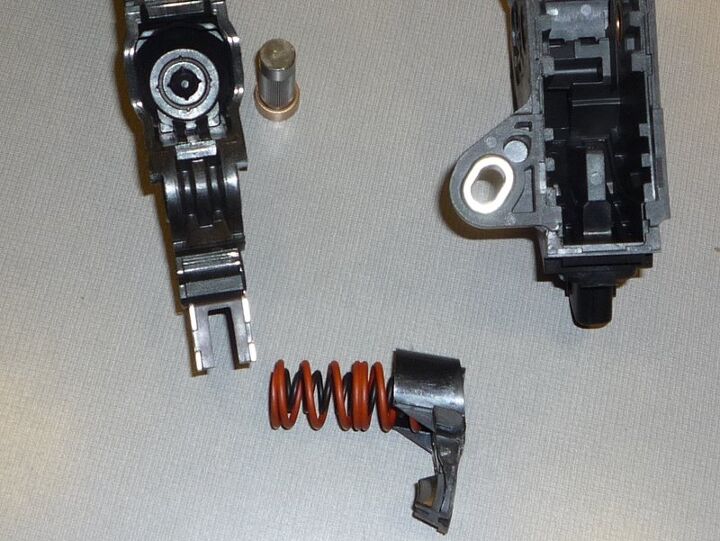#ToyotaGasPedalFix
Toyota Gas Pedal Fix Simulated: Friction Reduced, But By Too Much?
Update: a portal to all of TTAC’s articles on the subject of Toyota gas pedals is here:
We’ve taken it apart, explained Toyota’s intended fix, and now we’ve replicated the “fix” to see what effect it has. It works, but does it work too well?
Toyota Gas Pedal Fix Explained – With Exclusive Photos
Update: A portal to all of TTAC’s related articles on Toyota gas pedals is here:
Toyota has released their official “fix” for the sticky CTS-made gas pedals on the recalled models affected. From their graphic, it’s difficult to understand what parts are involved, and how they work. Thanks to our recent tear-down of the CTS pedal, we have the pictures and familiarity with the unit to explain it in detail.
Exclusive: TTAC Takes Apart Both Toyota Gas Pedals
Update: To see all of TTAC’s related articles on the subject of Toyota gas pedals, go here:
In yesterday’s post , we offered a bounty for anyone to open up both the CTS (bottom) and Denso (top) Toyota gas pedal assemblies. No one took us up, and no one anywhere else has done it, so we took it upon ourselves . Here they are, both e-pedal assemblies taken apart and examined, in our quest to understand if and what the significant differences are, and how Toyota’s possible “shim” fix would work. On initial observation, it appears that the CTS may be perceived as being the more solidly engineered/built unit, in that the pedal pivots on a traditional and solid steel axle whose bearings are brass or bronze sleeves. The Denso’s whole pivot and bearing surfaces are relatively flimsy-feeling plastic. But that can be deceptive, and we’re not qualified to judge properly if it is indeed inferior or superior. So the question that goes beyond the analysis of these e-pedals is this: are these units really the full source of the problem, or are they scape goats for an electronics and/or software glitch? Pictures and tear down examination and analysis follows:
Update #2: It’s clear to me now that the CTS unit I took apart already had the side cover plates (sheet metal) removed before I examined it. One can see where they fit, and are obviously intended to protect the exposed axle pivot and bushing seen above and below:
(Update #3: Also see our follow-up stories on Toyota’s fix and our replication of the fix and its results)


















Recent Comments